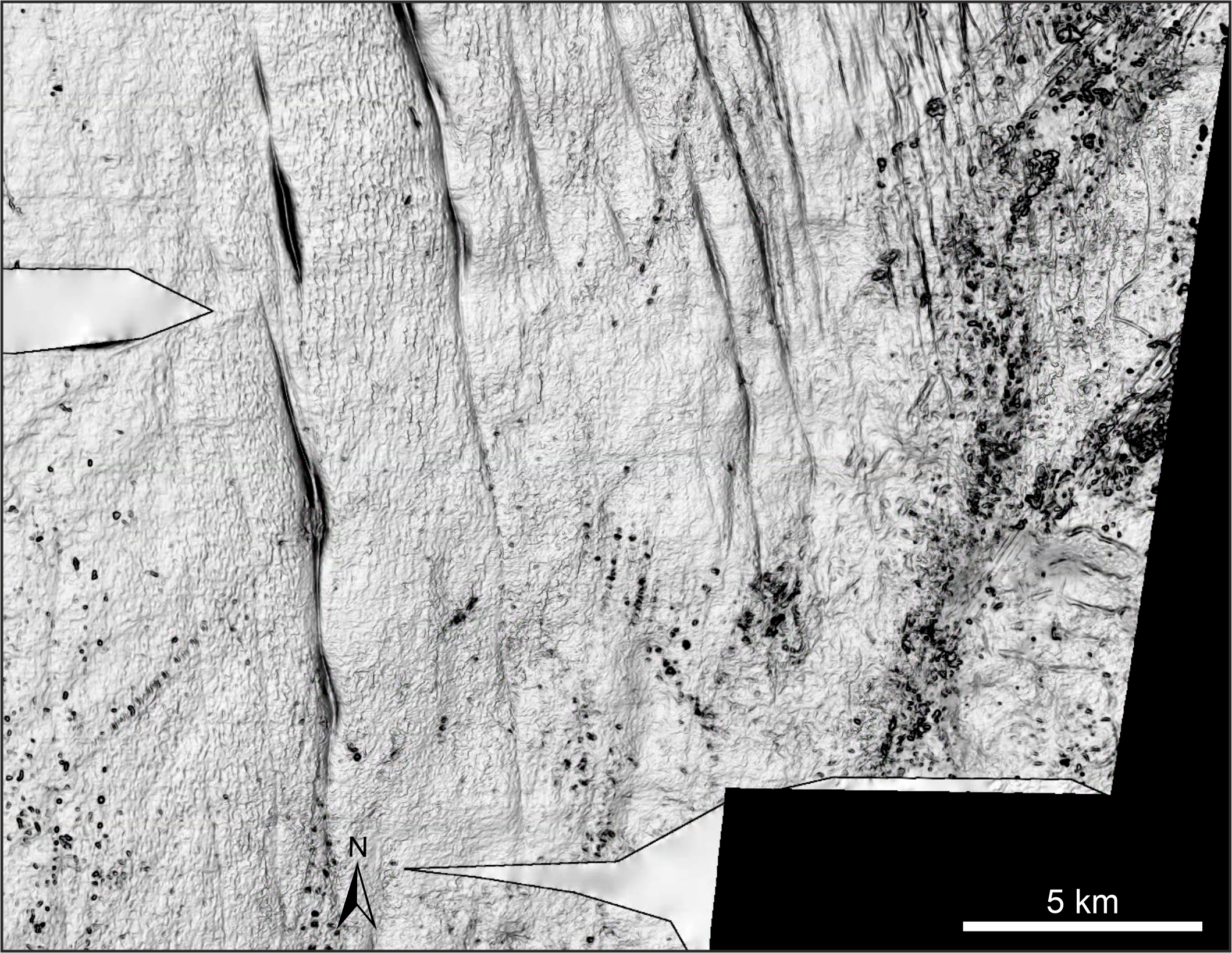Researchers have discovered huge landforms deep beneath the North Sea that suggest the region was swallowed by a giant ice sheet toward the middle of the last ice age.
The scientists captured these landforms in “clear and amazing” detail buried under 0.6 miles (1 kilometer) of mud, Christine Batchelor, a senior lecturer in physical geography at Newcastle University in the U.K. and co-author of a new study describing the landforms, told Live Science.
The images reveal patterns in the seabed consistent with the advance and retreat of a single, colossal ice sheet that existed roughly 1 million years ago, contradicting theories that smaller ice sheets repeatedly expanded and retracted around that time. Those theories were based on abundant scratch marks, which some researchers thought had been caused by glaciers. But it now turns out they originated from strong ocean currents.
“We only see conclusive evidence for one big ice advance during that time period,” Batchelor said, adding that places outside the current study area may still hold proof of several smaller ice sheets.
Batchelor and her colleagues used high-resolution sound wave data to reveal the landforms. They weren’t searching for anything in particular, Batchelor said, and were surprised to find evidence of a single grounded ice sheet — an ice sheet that sits on land rather than water.
Related: Never-before-seen shapes up to 1,300 feet long discovered beneath Antarctic ice
Grounded ice sheets move sediment around as they grow and shrink, creating erosional and depositional landforms from which scientists can reconstruct a region’s glacial past. “When the ice is advancing, it produces streamlined, elongated features that are sculpting the sediment in the direction of ice flow,” Batchelor said. “When the ice is retreating, you get features that show the imprint of that grounded ice margin as it steps back, so those tend to be transverse to the ice flow direction.”
The giant ice sheet formed during a period of the last ice age known as the mid-Pleistocene transition (MPT) that lasted between 1.3 million and 700,000 years ago. (The ice age itself began approximately 2.6 million years ago and ended 11,700 years ago.)
Research has focused on the MPT because it marks a time when glacial periods suddenly became more intense and switched from occurring every 40,000 years to every 100,000 years.
“The main reason that we’re interested in this broad time period around 1 million years ago is because it’s a time when we have a shift in climate going on,” Batchelor said. “The glacial periods get longer and they get more intense, so there’s quite a lot of work that is focused on trying to figure out why that shift happened.”

The new study, published Dec. 13, 2024 in the journal Science Advances, doesn’t provide an answer yet, but understanding where the ice extended to during the MPT could help researchers build a picture of the conditions that led to this global shift in climate.
The landforms indicate that the ice sheet covered present-day Norway and extended toward the British Isles. Some of the imprints left by its retreat resemble crevasse-squeeze ridges — landforms produced when an ice sheet “sits down” into soft sediment immediately before it retreats, pushing the sediment into cracks at the bottom of the ice, Batchelor said. Crevasse-squeeze ridges are preserved when water undercuts the ice, cleanly lifting it off the sediment.
Over the millennia following the retreat of the ice sheet, the landforms were covered in mud and hidden away.
The new findings offer clues about how ice sheets grow and decay in response to climate. “Being able to understand and to model exactly where those ice sheets were helps us to understand those feedbacks which are still going on, albeit in a different form, today,” Batchelor said.
